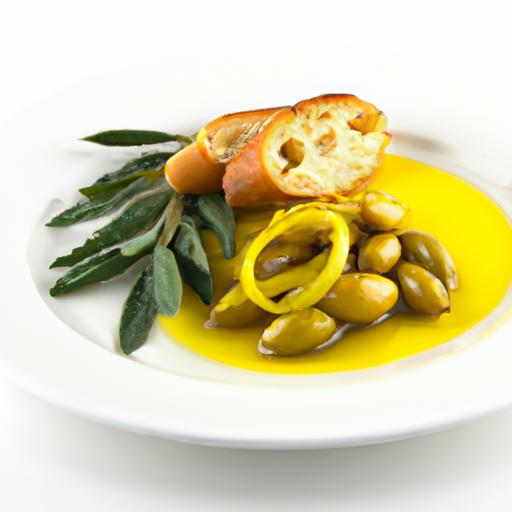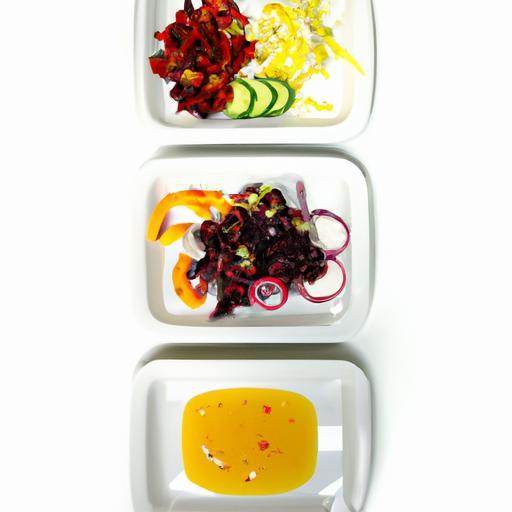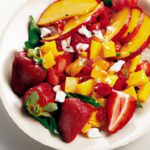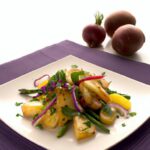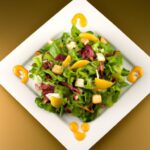In kitchens around the world, a quiet culinary debate simmers: olive oil or vegetable oil-which truly deserves a place on your stove? Both pour smoothly into recipes, both promise that golden finish, but beneath the surface, their stories differ sharply. From ancient Mediterranean groves to vast agricultural fields, the origins of these oils shape more than just flavor-they influence the way our bodies respond to each. In this article, we unravel the mysteries behind olive oil and vegetable oil, revealing which choice offers a healthier swap and why making the right pour could transform not just your meals, but your wellbeing. Prepare to see these pantry staples in a whole new light.
Heart Health and Inflammation: The Impact of Olive Oil and Vegetable Oil on Your Cardiovascular System
Olive oil vs. vegetable oil: a healthier swap explained through the lens of heart health offers striking insights. Rich in monounsaturated fats and antioxidants, extra virgin olive oil stands out as a champion for cardiovascular wellness. Its abundant polyphenols work behind the scenes to soothe inflammation and promote healthy blood vessels, reducing the risk of heart disease. In contrast, many vegetable oils contain higher levels of omega-6 fatty acids, which, when consumed excessively, can tip the inflammatory balance unfavorably. This subtle biochemical interplay makes olive oil a superior choice for nurturing your heart with every drizzle or sauté.
Cooking Considerations: How Heat and Flavor Influence Your Choice
When choosing between olive oil and vegetable oil, understanding their heat tolerance and flavor profiles is essential. Extra virgin olive oil boasts a moderate smoke point around 375°F (190°C), perfect for low to medium-heat cooking, dressings, and finishing touches that benefit from its vibrant, peppery aroma. In contrast, many refined vegetable oils handle high-heat frying or baking with smoke points above 400°F (204°C), offering a neutral canvas without overpowering flavors.
That rich, fruity nuance of olive oil elevates simple dishes, like a gently sautéed garlic kale or a roasted vegetable medley, while vegetable oil’s light presence suits delicate baked goods or deep-fried treats. Balancing these culinary traits empowers you to harness the best from each oil.
Smart Swaps: Practical Tips for Incorporating Olive Oil into Everyday Meals
Making the olive oil vs. vegetable oil swap healthier and effortless is easier than you might think. Start with simple switches:
- Salad dressings: Whisk up a homemade vinaigrette with extra virgin olive oil, lemon juice, Dijon mustard, and a pinch of sea salt.
- Sauté and stir-fry: Use olive oil for medium-heat cooking of vegetables and proteins, harnessing its flavor and nutritional benefits.
- Baking substitutions: Replace vegetable oil with a slightly lesser amount of olive oil in cakes or muffins to add moistness and a subtle fruity depth.
- Finishing oil: Drizzle cold-pressed olive oil over grilled fish, roasted potatoes, or fresh bread to amplify taste while boosting health.
Keep a bottle of high-quality extra virgin olive oil on your countertop as a daily reminder to embrace this heart-smart choice. Each swap not only enriches your meals but aligns your cooking habits with a wellness-forward lifestyle.
Prep and Cook Time
- Prep Time: 10 minutes
- Cook Time: Varies by dish (typically 15-30 minutes)
Yield
Serves 4 (adjustable depending on recipe)
Difficulty Level
Easy to Medium
Ingredients for a Basic Mediterranean Sauté with Olive Oil
- 3 tbsp extra virgin olive oil (focus keyword: olive oil vs vegetable oil)
- 1 medium onion, thinly sliced
- 2 garlic cloves, minced
- 1 red bell pepper, julienned
- 1 zucchini, chopped into bite-sized pieces
- 1 cup cherry tomatoes, halved
- Salt and freshly ground black pepper, to taste
- Fresh basil or parsley, chopped (for garnish)
Instructions
- Heat the extra virgin olive oil in a large skillet over medium heat until shimmering but not smoking.
- Add the sliced onion and sauté for about 5 minutes, stirring occasionally until soft and translucent.
- Incorporate the minced garlic, cooking for an additional 1 minute to release its fragrant aroma-be careful not to burn.
- Toss in the red bell pepper and zucchini, sautéing for 7-10 minutes until tender but still crisp, stirring regularly for even cooking.
- Add the cherry tomatoes last, cooking just until they begin to soften, about 2 minutes; season with salt and pepper to taste.
- Remove from heat and garnish with fresh basil or parsley for a bright, herbal finish.
Chef’s Notes
- Pick a high-quality extra virgin olive oil with robust flavor to maximize both taste and health benefits.
- For a vegan option, add sliced mushrooms or chickpeas for protein.
- To transform this into a heartier meal, toss with cooked quinoa or whole-grain pasta right before serving.
- Store leftover sautéed vegetables refrigerated in an airtight container for up to 3 days-perfect for quick lunches.
Serving Suggestions
Serve warm atop a bed of fluffy couscous or alongside crusty whole-grain bread for dipping into the flavorful olive oil-infused juices. This dish pairs beautifully with a light white wine or sparkling water with a splash of fresh lemon. For visual appeal, sprinkle toasted pine nuts or crumbled feta on top just before serving to add texture and richness.
| Nutrient | Per Serving |
|---|---|
| Calories | 180 kcal |
| Protein | 3 g |
| Carbohydrates | 12 g |
| Fat | 14 g (mostly healthy fats) |
Discover more about the benefits of extra virgin olive oil. For scientific insights into oils and heart health, visit the American Heart Association.

Q&A
Q&A: Olive Oil vs. Vegetable Oil – Which is the Healthier Swap?
Q1: What sets olive oil and vegetable oil apart at the molecular level?
A1: Olive oil is a golden elixir predominantly composed of monounsaturated fats, especially oleic acid, which supports heart health and reduces inflammation. Vegetable oil is often a blend of various oils (corn, soybean, sunflower), rich in polyunsaturated fats and sometimes high in omega-6 fatty acids, which in excess can tip the balance toward inflammation.
Q2: Can swapping vegetable oil for olive oil really improve my health?
A2: Absolutely! By replacing vegetable oil with extra virgin olive oil, you increase the intake of antioxidants, polyphenols, and monounsaturated fats. This combo helps lower bad LDL cholesterol and raises the good HDL cholesterol, promoting better cardiovascular health.
Q3: How do the flavors of olive oil and vegetable oil compare in cooking?
A3: Olive oil, especially extra virgin, offers a fruity, peppery, and sometimes grassy note that elevates dressings, drizzles, and sautéing. Vegetable oil is neutral and whispers rather than speaks, making it ideal when you want other flavors to shine.
Q4: Is olive oil a good choice for high-heat cooking?
A4: Olive oil has a moderate smoke point (~375-420°F), suitable for most stovetop cooking and baking. For intense high-heat methods like deep-frying, some vegetable oils with higher smoke points might perform better, but refined olive oil can often step up to the task.
Q5: What about calories-are olive oil and vegetable oil calorie-wise the same?
A5: Both oils pack roughly 120 calories per tablespoon, so in terms of energy, they’re equal. The health twist lies in the quality of fats and bioactive compounds, not the calorie count.
Q6: How does environmental impact play into choosing between these oils?
A6: Olive oil production typically requires less processing and can be more sustainable when sourced responsibly. Vegetable oils, depending on their crop origins, might involve intensive farming and higher pesticide use. Choosing organic and fair-trade options can help tip the eco-conscious scale.
Q7: Any tips for making the switch to olive oil smoother in everyday cooking?
A7: Start with drizzling olive oil on salads and roasted veggies to savor its flavor. Gradually replace vegetable oil in baking and sautéing. Experiment with different olive oil varieties; sometimes a mild extra virgin olive oil feels less intense to new tasters.
Q8: Is it possible to combine the benefits of both oils?
A8: Yes! Blending olive oil with a neutral vegetable oil can balance flavor, smoke points, and fatty acid profiles, creating a versatile cooking companion that caters to both taste buds and nutritional goals.
Q9: Are all olive oils created equal when it comes to health?
A9: Not quite. Extra virgin olive oil is the purest and retains the most antioxidants. Light or refined olive oils have been processed and lose some of these beneficial compounds. So, reaching for quality extra virgin olive oil is the healthiest bet.
Q10: Final verdict: Should I ditch vegetable oil completely?
A10: While vegetable oil isn’t inherently bad, leaning into olive oil offers a nutrient-rich upgrade. The best approach is variety and mindfulness-favor olive oil where you can and save vegetable oil for neutral-flavored dishes or high-heat cooking as needed. Your heart (and palate) will thank you!
Key Takeaways
In the grand kitchen of life, choosing between olive oil and vegetable oil is more than a simple swap-it’s a mindful step toward nourishing your body and honoring your health. While vegetable oil often takes center stage for its neutral flavor and affordability, olive oil’s rich history and impressive nutrient profile make it a compelling contender for the crown of healthier choice. By understanding the unique benefits and subtle differences of each, you’re empowered to make informed decisions that complement your cooking style and wellness goals. So, next time you reach for the bottle, remember: a drizzle of olive oil isn’t just good for your recipes-it’s a gift to your heart, your palate, and your overall vitality. Choose wisely, savor thoughtfully, and let your kitchen be a place where health and flavor dance in perfect harmony.